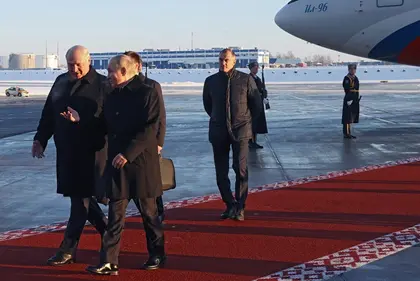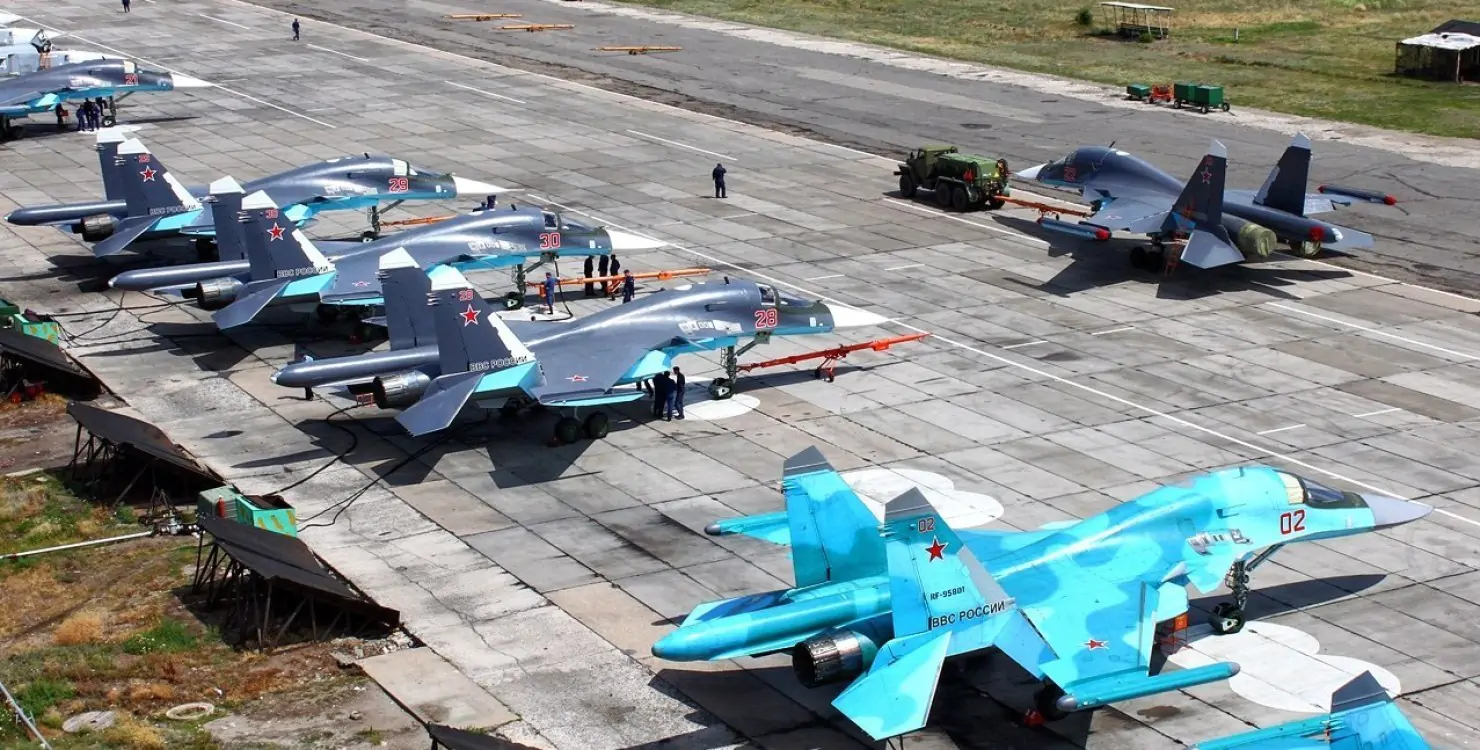On Monday Dec. 19, Russian President Vladimir Putin met close ally and dictator Alexander Lukashenko – the first time in three-and-a-half years that the pair have met on Belarusian soil. Lasting just over two hours, the full details of their meeting haven’t been disclosed, but statements and events before and after may shed some light on what was discussed.
What happened in the run-up to the meeting?
JOIN US ON TELEGRAM
Follow our coverage of the war on the @Kyivpost_official.
Under Lukashenko’s leadership, Belarus has been a staunch ally of the Kremlin and has supported Russia in its invasion of Ukraine. This is despite most Belarusians allegedly opposing such support.
Before Monday’s meeting, both parties officially stated they planned to discuss "the process of implementing previously adopted allied programs," with Lukashenko telling reporters in Minsk on Dec. 16, that the situation regarding Ukraine was "escalating."
This was viewed by some, including the Institute for the Study of War, as a sign that Belarus could soon be joining Russia in launching a new offensive in Ukraine in the coming weeks or months.
Before Putin had even stepped off his plane, Russia's defense ministry announced that its troops stationed in Belarus would conduct joint military exercises with the Belarusian military, leading Ukrainian Deputy Interior Minister Yevhen Yenin to tell the BBC that it was bolstering its defenses along the Ukraine-Belarus border.

How Poland’s Trade with Russia Undermines EU Sanctions and Support for Ukraine
While Belarus has of yet not been directly involved in the war, in February it allowed Russian troops to use its territory to launch the illegal and ongoing invasion of Ukraine.
What did Putin and Lukashenko talk about?
We don’t know what exactly was said behind closed doors between the two unpredictable leaders. But the press conference that followed, albeit short and vague, provided a few clues to the context of their discussion and upcoming plans.
Speaking mostly about economic relations, trade, and joint security, Putin indicated that some Belarusian military aircraft have been re-equipped to be able to carry nuclear missiles. He also confirmed that Russia is helping to train the crews of those aircraft, with Lukashenko thanking him for providing Belarus with an Iskander ballistic missile system and an S-400 air defense system.
There was widespread speculation that Putin may have used the visit to pressure Lukashenko into joining a new ground offensive in Ukraine – a claim Kremlin spokesman Dmitry Peskov dismissed as “totally stupid, groundless fabrications.”
The topic of Ukraine was hardly mentioned at all – at least not in public.
Putin did, however, say: “Russia has no interest in absorbing anyone – this would simply make no sense,” appearing to address speculation that Russia might seek to swallow Belarus into the Russian Federation, especially if Lukashenko expressed reluctance to send his troops into Ukraine. Putin added “this would simply make no sense,” and that rumors of him trying to pressure Lukashenko came from “ill-wishers.”
Speaking on Monday evening, U.S. state department spokesperson Ned Price mocked Putin’s words as displaying the “height of irony” considering he is currently seeking to forcibly absorb Ukraine into Russia.
So, what are the chances of Belarus marching into Ukraine?
Speaking exclusively to Kyiv Post on Monday, the exiled Belarusian opposition leader Sviatlana Tsikhanouskaya staunchly insisted that her country’s people oppose Belarus’ participation in the war, but admitted that Ukraine is “right to prepare” because the probability “might increase in coming weeks.”
“Belarusian armed forces are part of the society and share the same view on the war – 86 percent of Belarusians are against participation in the war,” she said. “This has stopped the order to send Belarusian troops to the battlefield in Ukraine. It was not the good will of dictators or [about] Lukashenko standing up to Putin – he is fully on the Kremlin's side.
“However, the probability of such an order remains and might increase in the coming weeks. I think the Ukrainian leadership is right to prepare for this scenario even though it means distracting significant forces from active war zones in the south-east.”
Tsikhanouskaya said that Lukashenko “sees Ukraine as a threat,” adding that “a democratic, free, European Ukraine is a bad example to the dictatorships of Lukashenko and Putin, therefore this war is a logical decision for them.”
When asked what Russia and Belarus’ joint aim might be, the outspoken exiled Politician was clear in her answer: “to destroy Ukraine, its European aspirations and national identity, and bring it under their control.”
“The [Lukashenko] regime is insecure and cannot re-establish control over the country,” she continued. “It has become completely detached from the people and acts with the sole goal to preserve Lukashenko's power, even if it means yielding sovereignty to Russians.”
Tsikhanouskaya also said she was interested in having a meeting with President Volodymyr Zelensky, saying that Belarus and Ukraine “have the same enemies.”
Speaking to Kyiv Post today, however, Daniel Speckhard, a former U.S. ambassador to Belarus and the CEO of Corus International, an organization praised for its ongoing work helping Ukrainians during Russia’s brutal ongoing war, voiced caution in such a meeting.
“The desire of Ms. Tsikhanouskaya to meet with President Zelensky in raising attention to the situation in Belarus is understandable,” he said. “But a meeting is probably not advisable at this time and likely only to push the existing leadership in Minsk closer to Russia and reduce sympathies for Ukraine’s plight.”
On the possibility of Belarus joining an offensive into Ukraine, Speckhard said: “I think the odds are even that Russia will force Belarusian troops to contribute troops to Russia’s fight.
“It would be a mistake for Belarus and Russia to take this step as it will weaken Belarus’ own security and require Russia to defend an additional 1100 km border.
“However, Russia’s shortage of trained troops is likely to increase the pressure to pull in additional Belarusian forces.
“At the same time, Russia may just take Belarusian military personnel and put them in Russian uniforms as a first step,” he added.
You can also highlight the text and press Ctrl + Enter






